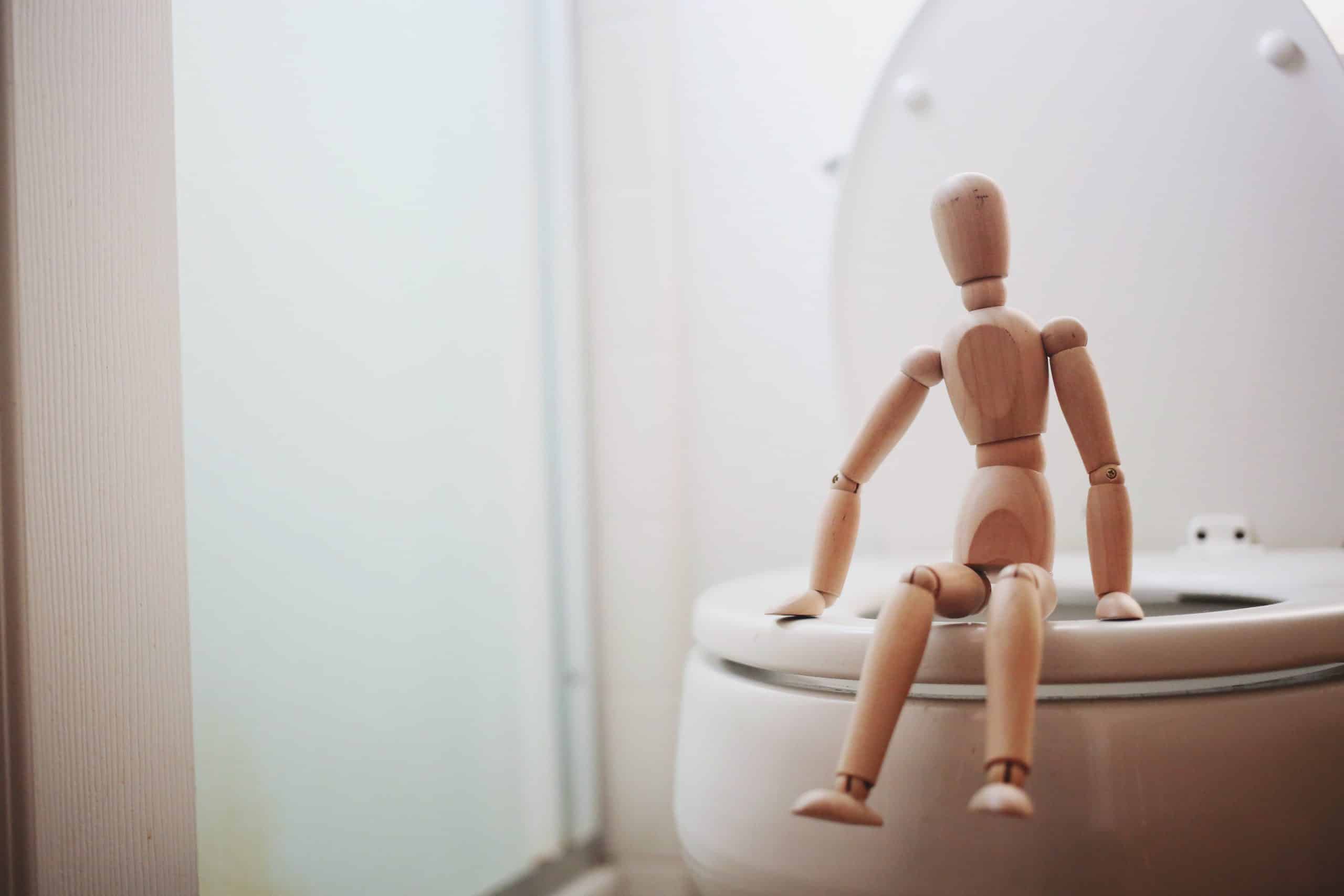
How often does sensory processing cross your mind when treating kiddos?
When a referral comes through with a diagnosis of enuresis, urinary incontinence, constipation, or fecal incontinence do you recognize this “diagnosis” as a potential symptom or comorbidity of something else?
Sensory processing disorder is commonly seen in many of the children who walk through the doors of your clinic.
In fact, a 2014 study suggests that 44% of school-age children with urinary incontinence also have difficulty with sensory processing.
Even children who have monosymptomatic enuresis are often reported to have behavioral and conduct problems. This can be due to difficulty with sensory processing and their response to sensory input.
Children who are under responsive, sensory seekers, or have auditory sensitivities have greater difficulty with dysfunctional voiding. And children with low tactile processing are five times more likely to have urinary incontinence and dysfunctional voiding patterns.
And you’ve heard it described by a child’s parents or caregivers. During your initial interview they often say things like:
- My child is a deep sleeper
- They don’t seem to know when they are wet
- They’re so focused on what they’re doing and wait till the last minute to use the bathroom
- My child runs and hides to have a bowel movement
- They took forever to toilet train
- They’re afraid of the sound of the toilet flushing
- These statements and others can be related to difficulty with sensory processing.
I just finished a series of blogs where I touched on one of the primary causes of enuresis — neuropsychological disorders such as ADHD. I also have a blog about stool withholding, commonly seen in children with a sensory processing disorder. You can review them here.
Today we’ll dive a little deeper into sensory processing. And how it relates to children with bowel and bladder problems.
What is Sensory Processing Disorder?
Sensory processing is your ability to receive information from your environment or inside your body and respond to it in a functional way. As an example — if you see someone walking toward you in the hallway, you respond to what you see by moving to the side to avoid running into them.
Most are familiar with the five senses:
- Vision
- Smell
- Taste
- Touch
- Hearing
But in fact, we have eight sensory systems. They include the five above, plus the following:
- Proprioception: understanding where your body is in space.
- Vestibular processing: related to your head position; organizes how you move, your balance, and auditory information.
- Interoception: your ability to tune into internal signals inside your body.
When these systems work well together we respond appropriately. Such as going into the bathroom when we feel pressure in our lower abdomen. But when these signals are scrambled or misunderstood we respond inappropriately.
In the 1970s occupational therapist, A. Jean Ayers developed the theory behind sensory processing and described sensory processing disorder as a “neurological traffic jam.”

This describes the misinterpretation of information coming into the body and the brain.
A child’s inability to understand any one of these sensory systems changes the way they participate in everyday activities.
You know the child who doesn’t like the feel of tags in their clothing, is a picky eater, or runs away from loud noises.
But what about the child who seems to have a high pain tolerance?
Or doesn’t seem to recognize signals coming from inside their body?
- The child who doesn’t wake up at night because they need to use the bathroom.
- Or the child who needs to assume a specific posture to void, but refuses to use the bathroom.
- And the child who tells you they’re not wet even though there is a large wet spot on their pants.
These symptoms are related to poor sensory processing. But what causes it?
And how can you as a pediatric pelvic floor therapist determine if sensory processing is an underlying factor?
What Causes Sensory Processing Disorder?
The cause of sensory processing disorder is unknown but is believed to be genetic.
Premature infants are at high risk. In fact, 50% of children born prematurely showed symptoms of sensory processing disorder.
Babies born at full-term, but who experience birth trauma or are born by cesarean section are also at greater risk.
Other factors including stress, trauma, physical disabilities, and illness can impact a child’s sensory processing.
Ask questions about a child’s early development including their:
- Development in utero
- Birth history
- Development of milestones
- Illnesses including the number of ear infections, allergies, or respiratory illnesses
- Sleep
- Feeding
This can give you insight into a child’s sensory processing and challenges potentially impacting their development, including gaining control of their bladder and bowels.
How Is Sensory Processing Related to Bladder and Bowel Dysfunction?
Some children with sensory processing disorders are over responsive to information, while others are under responsive.
A child who doesn’t like the feel of tags in their clothing is considered to be over responsive. As compared to a child who has a high pain tolerance and is under responsive.
A child who withholds stool because they’re afraid to use the toilet would be considered over responsive. The child whose bladder has leaked through their clothing but tells you they’re not wet is a child who is under responsive.

A child who has difficulty with tactile (touch) processing may not feel when stool has leaked into their underwear or feels their wet clothing.
A child may resist using the toilet because they gag or do not like the smell of having a bowel movement. Or they don’t like the sound of the toilet flushing.
A child with poor proprioception may have difficulty relaxing their pelvic floor to have a bowel movement.
What about the child who has low muscle tone? Difficulty with vestibular processing may make it difficult for them to maintain sitting balance on the toilet.
And of course, we can’t forget interoception. A child’s difficulty with sensing and understanding their body’s internal signals to eliminate.
There’s recent evidence related to interoception and a therapist’s ability to support a child’s interoceptive processing related to bladder and bowel function. We’ll dive into this in my next blog.
But how can you support the children you’re treating now?
How the Pelvic Floor Therapist Can Support Children With Sensory Processing Disorder
The children we treat can be complex. Understanding the primary cause of their bladder and bowel dysfunction and other contributing factors is key to being effective in their treatment.
As I’ve emphasized before, the psychological impact in children with bladder and bowel disorders is far more detrimental than the physiological ones. This is why I offer comprehensive courses to support you in treating this rewarding population.
My introductory course, Peds Level 1 — Treatment of Bowel and Bladder Disorders: Evaluation and Treatment of Dysfunctional Voiding, Bedwetting, and Constipation, provides you with everything you need to get started.
Even if you’ve been working with children for a while this course will provide you with the latest in research so you’re at the top of your game with helping children and their families find relief.
And one of my favorite things at Kids Bowel and Bladder is The KBB Professional Village. This is an ongoing mentorship program where both physical and occupational therapists gather to discuss case studies and current trends as it relates to kids with bladder and bowel dysfunction.
The Village is where you lean on your physical & occupational therapy friends to gain a deeper understanding of sensory processing disorder, get treatment ideas, and even listen to experts like Kelly Mahler, OTD and leader in interoception. In order to subscribe to this amazing group you need to take one of my courses first.
Get started today. I can’t wait to see you there!
SOURCES:
Sensory processing differences and urinary incontinence in school-aged children – ScienceDirect
SPD – What is Sensory Processing Disorder
Sensory Processing Disorder | Psychology Today
